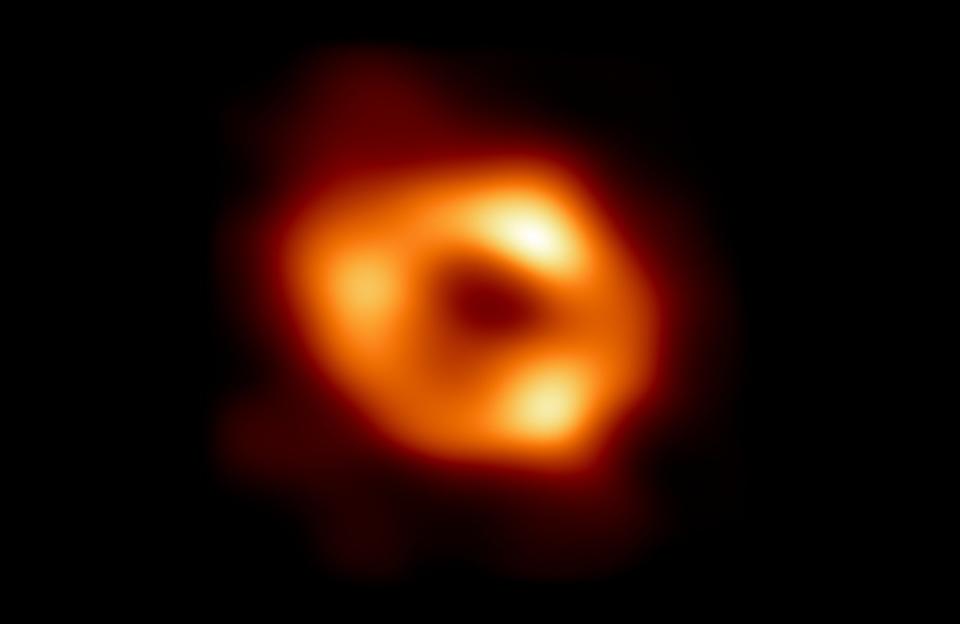Astronomers Just Captured the First Photo of a Black Hole in the Milky Way Galaxy — Take a Look
If you've ever wondered what's at the center of our massive, spiraling galaxy — you can actually see it.
Scientists have long known that there was a black hole at the heart of the Milky Way galaxy, which they've named Sagittarius A* — and for the first time ever, they've been able to photograph it. The image was taken by the Event Horizon Telescope (EHT), a project that connects radio telescope arrays around the planet and essentially creates a super-telescope that's 6,200 miles across, which is just shy of the full diameter of Earth.
The image shows a lumpy orange ring or doughnut — it might not seem like much, but that object is nearly 27,000 light-years away, which makes it incredibly difficult to image. What you're looking at is the hot gas that swirls around the black hole itself.
We finally have the first look at our Milky Way black hole, Sagittarius A*. It’s the dawn of a new era of black hole physics. Credit: EHT Collaboration. #OurBlackHole #SgrABlackHole
Link: https://t.co/Ax7ECRVg8A pic.twitter.com/LRWizSYOy9— Event Horizon 'Scope (@ehtelescope) May 12, 2022
We're seeing in the image of Sagittarius A* is a buildup of hot gas called the accretion disk that circles the black hole at the event horizon, or the point of no return — once matter crosses the event horizon, it's captured by the gravity of the black hole and sucked into oblivion.
"We were stunned by how well the size of the ring agreed with predictions from Einstein's Theory of General Relativity," EHT Project Scientist Geoffrey Bower from the Institute of Astronomy and Astrophysics, Academia Sinica, in Taipei, said in a statement. "These unprecedented observations have greatly improved our understanding of what happens at the very center of our galaxy, and offer new insights on how these giant black holes interact with their surroundings."

Courtesy of EHT Collaboration
The image of Sagittarius A* is the second image of a black hole taken by EHT. The first was an image of M87*, located at the center of the Messier 87 galaxy. While Sagittarius A* is a on the smaller side of the supermassive black hole spectrum — astronomers are calling it a "gentle giant" — M87* is 1,000 times more massive.
"Now we can study the differences between these two supermassive black holes to gain valuable new clues about how this important process works," said EHT scientist Keiichi Asada from the Institute of Astronomy and Astrophysics, Academia Sinica, in Taipei. "We have images for two black holes — one at the large end and one at the small end of supermassive black holes in the Universe — so we can go a lot further in testing how gravity behaves in these extreme environments than ever before."

